I am trying to create an array which is symmetric with elements placed as below
I have written the following code to get this form with parameter being 0.5 and dimension being 4-by-4.
import numpy as np
a = np.eye(4)
for i in range(4):
for j in range(4):
a[i, j] = (0.5) ** (np.abs(i-j))
This does what I need but for large dimension (1000s) this causes a lot of overhead. Is there any other low complexity method to get this matrix? Thanks.
